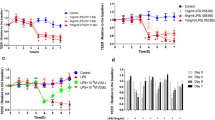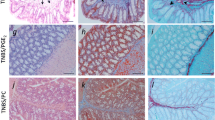Abstract
The activity of phospholipase A2 (PLA2) is elevated in the intestinal epithelia of patients with inflammatory bowel disease (IBD). We recently reported that PLA2 mediates hydrolysis of phosphatidylcholine (PC) to lysophosphatidylcholine (L-PC) when both are applied to the apical surface of cultured EC monolayers, resulting in increased bacterial translocation (BT) and decreased transepithelial electrical resistance (TEER). Free fatty acids (FFA) are the other products of this reaction, however, their effect on Caco-2 cell permeability has not been reported. In addition to PC, other luminal phospholipids are present at the surface of the enterocyte. PLA2 may also mediate the hydrolysis of luminal phospholipids other than PC. The aim of this study was to examine the effects of phospholipids other than PC and common FFA on intestinal epithelial permeability and BT. Human Caco-2 enterocytes were grown to confluence on porous filters in the apical chamber of a two-chamber cell-culture system. Monolayer integrity and tight-junction permeability were measured as TEER. First, common FFA released by PC hydrolysis were determined using thin-layer chromatography (TLC). In separate experiments, monolayers were treated with phosphatidylethanolamine (PE), lysophosphatidylethanolamine (L-PE), or palmitoleic acid, oleic acids, linoleic acids, and arachidonic acid solubilized in solution with PC. The magnitude of BT was determined 2 h after treatment by adding Escherichiacoli C25 to the apical chamber followed by quantitatively culturing basal-chamber samples. Statistical analysis was by the Kurosaki-Wallis test. TLC of PC samples incubated with PLA2 on the apical surface of Caco-2 monolayers demonstrated the production of palmitoleic acid, oleic acids, linoleic acids, and arachidonic acid. L-PE significantly decreased TEER compared to controls, but to a lesser degree than L-PC alone. L-PE had no effects on BT. Palmitoleic acid and oleic acid likewise significantly decreased TEER compared to controls, however, less than L-PC. All FFA tested had no effect on BT. Phospholipids applied to the apical surface of enterocytes, such as those found in vivo in mucus, can be hydrolyzed by the enzyme PLA2 resulting in lysophospholipid and FFA species that can alter enterocyte monolayer permeability. However, FFA and L-PL, other than L-PC, appear to have no effect to stimulate BT. This observation may have clinical implications in the pathogenesis and treatment strategies for IBD patients in whom enterocyte PLA2 activity has been shown to be elevated.
Similar content being viewed by others
Author information
Authors and Affiliations
Rights and permissions
About this article
Cite this article
Sawai, T., Drongowski, R., Lampman, R. et al. The effect of phospholipids and fatty acids on tight-junction permeability and bacterial translocation. Pediatr Surg Int 17, 269–274 (2001). https://doi.org/10.1007/s003830100592
Issue Date:
DOI: https://doi.org/10.1007/s003830100592




